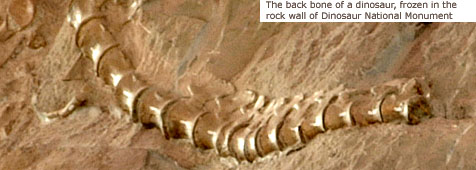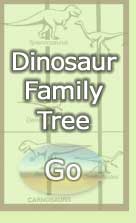



Most of the Douglass Quarry fossils are part of the long-neck, long-tail, plant-eating group called Sauropods. They were the largest creatures ever to walk on land. This group includes Apatosaurus, Barosaurus, Camarasaurus, and Diplodocus. These animals share many common traits, and look very much alike. Other bones in the Quarry belong to different four-legged and two-legged plant-eating groups called Ornithischians.
An even smaller percentage of the bones belong to the meat-eating Theropods. Take a look at the dinosaur family tree to better understand how paleontologists classify these diverse animals.
Although originally called terrible lizards that lived millions of years ago, dinosaurs are unlike lizards in how their legs are positioned. Lizard legs sprawl out to the side. Dinosaur legs were straight under their bodies allowing them to better support tons of weight.
In order to be classified as a dinosaur, an animal must have;
· hip, knee, and ankle bones that allow it to stand with its legs directly under its body
· a ridge on the upper arm bones
· jaw muscles that attach to the top of the skull
· three bones [that make up one side of the hips] that form an open socket for the thigh bone to fit in
· the second finger is the longest digit of the hand

Sauropods [lizard-feet] 4-legged, long-necked plant eaters
- Apatosaurus
- Barosaurus
- Camarasaurus
- Diplodocus
- Theropods [beast feet] 2-legged, sharp-clawed meat eaters
- Allosaurus
- Ceratosaurus
- Allosaurus
Stegosaurs [plated lizards]
4-legged, plate-backed
- Stegosaurus
- Ornithopods [bird-feet]
2-legged, fairly small plant eaters
- Camptosaurus
- Dryosaurus
- Camptosaurus
















